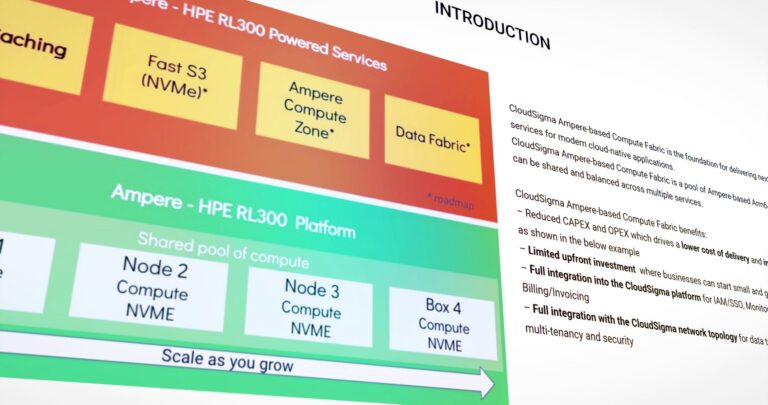There’s no denying that the transport sector is a prominent cog across most global industries.
As the saying goes, “There is no production without procurement logistics, and no trade without delivery traffic.” Especially as, according to a McKinsey study, 96 percent of freight forwarders surveyed plan to maintain or expand their investments in digital structures, data is playing a crucial role as a digital companion and assisting logistics businesses navigate the ever-changing world of commerce.
Therefore, intelligent networking between customers, service providers and co-operation partners is a decisive competitive advantage today. For example, it optimises processes, increases cost efficiency, facilitates communication about arrival times and provides data that companies need for sustainability reporting. However, despite all the awareness of the need for digitalisation, there is one major challenge: companies often create many small, self-contained stand-alone solutions. In a network with others, however, neither end-to-end transparency nor a resilient supply chain can be realised in such a fragmented system landscape.
A Heterogeneous System Requires Standards
Data exchange between companies must be smoothed by equipping all parties with real-time capabilities and, above all, with planning software that is compatible with the systems. It is a well-known fact that the more systems involved in the network are involved, the more difficult it becomes to exchange information. Therefore, large, heterogeneous networks require standards that can be recognised, interpreted and processed by different systems; a real challenge for the transport industry. This is because a system and data jungle has become established in road freight transport.
Take telematics systems, in the DACH region alone, there are now over 80 different providers for such solutions, with each tool generating a large number of individual data records every minute during a transport operation. Shipping companies work with a large number of different freight companies, so it is necessary to integrate systems for analysing data from different sources. If subcontractors also have to be integrated into the processes, the lines of communication increase exponentially – and with them, the complexity. For these reasons alone, haulage companies today are also required to use many different technology systems in order to obtain information from their customers.
A Neutral Intermediary
One approach to resolve these issues is to invest inuse a transportation management platform. It’s also crucial to also employ the correct personnel to operate them in conjunction with these advances in technology.
By acting as a neutral intermediary, the platform provides a quick-to-implement, resilient, scalable, and future-oriented solution. It creates connectivity by reading the various incoming data, converting it into a (platform) standard and thus generating a data pool with a shared format.
This is connected to the user’s IT or ERP systems, providing solutions for the efficient and networked automation of a wide range of transport processes, partly based on AI or machine learning algorithms – from freight sourcing to transport execution and planning to auditing. Supplementary real-time data on load volumes, traffic and weather also makes it possible to precisely measure and analyse the actual CO2 emissions of a transport operation.
There are no Stable Networks Without High Data Quality
However, the connection to a linking interface for different systems is only part of the solution. Data quality also plays an important role in ensuring a truly smooth and automated exchange between the players in the supply chain. However, being able to process and read the data is one step.
The next step must be the completeness and comprehensibility of the data and how it is sent. If a shipper sends an incorrect data record, no matter how well networked the digital ecosystem is, it can still end up with missing data. A prime example of this is ‘Address Planning Data’. Say a house number is missing from the system, the driver can usually still find it quickly via smartphone – but it takes additional time to do so. This problem may seem insignificant, but it can lead to costly delays if the wrong gate address is given to a large factory site with several access roads. Of course, if the driver delivers here regularly, they will eventually know where to deliver, even if this information is still missing. The problem though is that, as soon as the network is expanded and a new carrier is added, this error occurs again, costing business valuable time, and therefore money.
And Finally…
These issues can be resolved by simply utilising an independent platform acting as an intermediary. By using a large amount of data from comparable transports and empirical values, these platforms improve the lack of data quality automatically over time and transports can thus be executed more smoothly. Real-time data can also recognise deviations from the planned data and provide a corresponding indication. Additionally, in the future, AI and machine learning could also help to further improve data quality on the platforms.
If the industry can overcome technical challenges by establishing standards and improving the quality of its data, it can optimise interoperability within the supply chain. This will allow all parties to focus on the essentials – the transportation and production of goods – without any loss of information.
About the Author
Philipp Pfister is Chief Customer Experience Officer at Transporeon (a Trimble company). At Transporeon, a Trimble company, our mission is to bring transportation in sync with the world. We power the largest global freight network of more than 1,400 shippers and retailers and more than 150,000 carriers and logistics service providers. Every day they execute more than 110,000 transports on our platform and book more than 100,00 dock appointments for loading and unloading. In the course of one year, roughly €55bn in freight is being processed on our platform.
Featured image: Adobe


